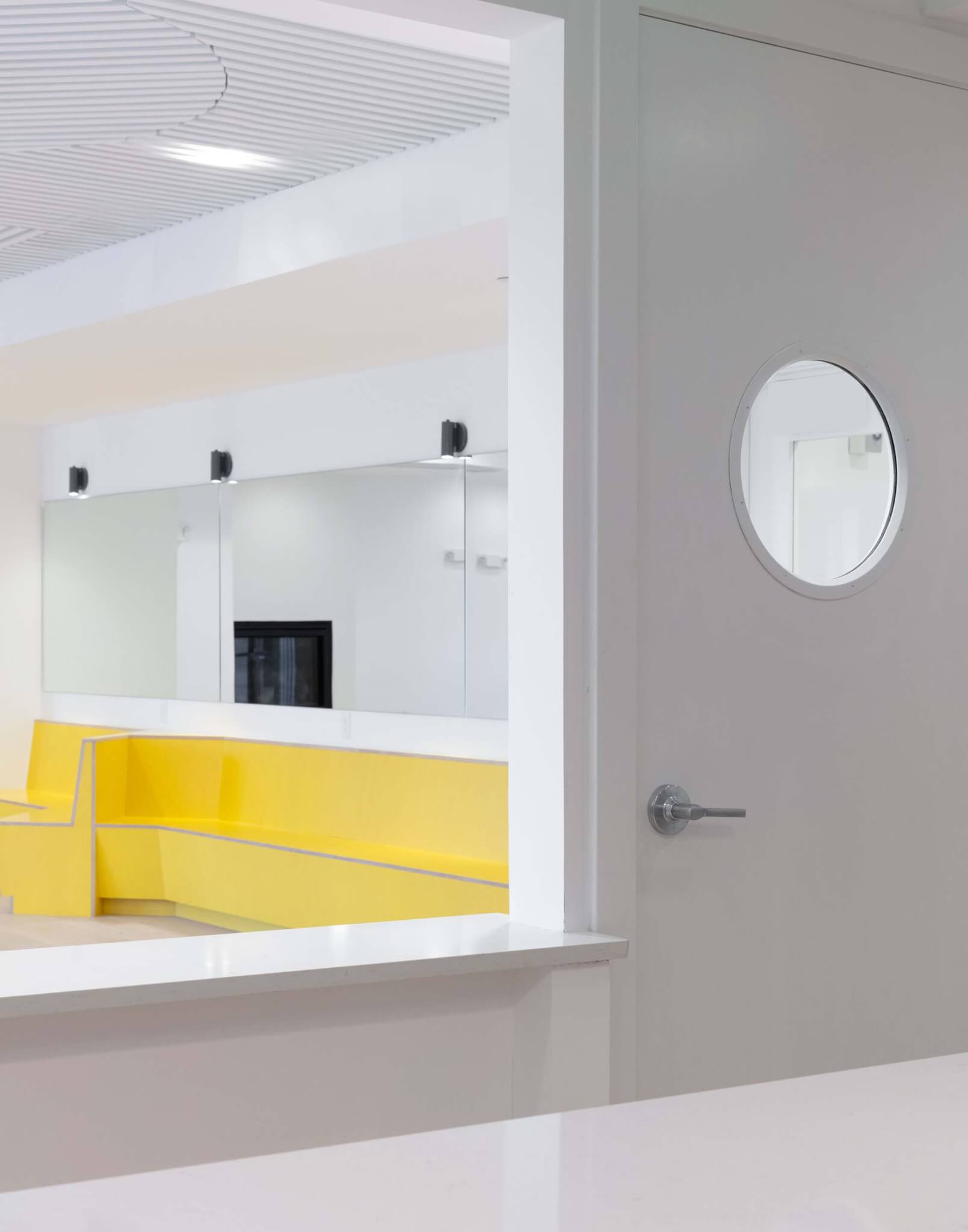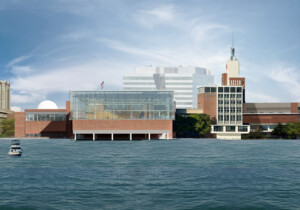When a group called Bay State Cohousing was looking for a venue for its new cohousing development, the modest Boston suburb of Malden met its criteria: a richly varied ethnic population, support for progressive causes, convenient to bus and rail transit, and a surrounding community that likes the idea of cohousing in its midst.
“We met with people in the neighborhood, and it just felt right,” said Lorraine Fryer, an early member of the group. Bay State Cohousing then tapped sister design duo, Jenny and Anda French of French 2D, to collaborate on a design prioritizing the group’s values: The 30-unit, 45,000-square-foot complex looks like a cross between an upscale Caribbean motel and something in New Orleans’s French Quarter. The color palette is lively: pastel greens and pinks and dashes of primary color here and there. The New Orleans–style central courtyard is an intentional gesture by the architects to give the building a sense of camaraderie and shared ownership.

A classmate of Fryer’s at Brown University first formed the group, of which Fryer was an early member. Others joined serendipitously—by word of mouth and in response to an informational website.
Oddly enough, the French sisters credit a shared hereditary eye condition for their ability to design the quirky floorplans the residents called for. “My sister and I share a condition called small angle esotropia, and it affects depth perception,” Jenny French said. “We think it gives us a greater appreciation of the importance of designing in plan, elevation, and section.”
Indeed, the building’s unusual massing and odd angles can be disorienting at first. The main facade has an asymmetrical profile punctuated by colorful window jambs and sills; you enter this main portal and are presented with a bright green main stairway designed to promote chatting and interaction. Exterior walkways seamlessly intertwine with interior corridors and embedded common spaces. Breaks and asymmetries in plan create reciprocal connection, as seen in a pair of decks at the second levels that exchange views across an open corner of the courtyard. Call it what you will—courtyard, agora, center plaza—it is the heart and soul of Bay State Cohousing.

The cohousing phenomenon began in Denmark in the late 1960s and early 1970s, but only now has a following emerged in the United States. Although loosely defined as an intentional community of private homes clustered around shared space, cohousing designs and layouts vary widely. But all share an interest in breaking down accepted norms of living that prioritize single-family assumptions and individual isolation. According to the Cohousing Association of America (CAA), there are about 170 such communities nationally, and they are set up such that those interested in joining are vetted based on their commitment to cohousing ideals, namely camaraderie, environmental responsibility, and diversity and social equity, to name some common themes.
“The building had to accommodate a wide range of personalities and degrees of personal engagement,” said Anda. To meet these needs, Bay State Cohousing boasts 5,000 square feet of common area, including a central kitchen and dining area for frequent shared meals, along with a children’s playroom, music room, art studio, meditation space, and a shared lounge that has garnered the name “the bar.”

Like most cohousing projects, ownership structures are nontraditional. Bay State Cohousing is set up as a condominium, but began as an LLC in order to manage risks in the development phase. The LLC obtained a construction loan, and the remainder of the funds to develop and build were provided by the members as advance payment on their eventual unit purchases. Thus, each unit is privately owned, but the common space is owned by the group. There is a single HVAC system, with each household paying a portion of the bill for its use and upkeep.
So, how does one join a community like Bay State? “You become a social member first,” Jenny explained. “You come to meetings, you share a meal. It’s a self-selection process.”
While one of the tenets of Bay State Cohousing is access to public transportation, the development fell under Malden’s rule of one parking space for each bedroom in the building. Ironically, a group of progressive residents fell victim to a civic bureaucracy somewhat at odds with their founding principles. But the architects put their own spin on the required parking garage, specifying a green roof surrounded by common gardens that the residents care for. While the project doesn’t have a LEED certification per se, Jenny French said the project is designed to meet LEED Silver requirements. She added that building codes in greater Boston now virtually assure a minimum LEED Silver status.


The region has several cohousing developments, mostly in liberal communities like adjacent Cambridge and Boston’s Jamaica Plain neighborhood. The late guru behind Bay State Cohousing and numerous similar developments was Chris ScottHanson, coauthor of The Cohousing Handbook: Building a Place for Community. He served as a consultant for both Bay State and Jamaica Plain Cohousing before his death in 2022.
The French sisters note the rich architectural history of the surrounding neighborhood, like the library designed by H. H. Richardson located just blocks away from Bay State Cohousing. An red-brick office building adjacent to the development is also in the Richardsonian Romanesque style.
“We found a curious sympathy with the character and details of the Richardsonian Romanesque office building,” Anda said. “We were also inspired by the unapologetic use of color in nearby Victorian ‘Painted Ladies.’ We were working with a unique set of geometries in the design of the interior and exterior arrangements, but we were conscious of speaking to the playfulness and nuance of the local context.”

According to the CAA, there are 25 cohousing developments in Massachusetts, with more planned, giving the commonwealth one of the largest per-capita concentrations of cohousing in the nation. But it’s more than the state’s progressive politics at work: cohousing serves to counter high costs of housing by providing an affordable alternative to the traditional single-family home or “luxury” condominium in a state with some of the most expensive residential real estate anywhere.
Bay State Cohousing’s opening in January 2023 meant that most of the construction occurred during the COVID-19 pandemic. Jenny French concludes: “Getting a progressive architecture project built in the middle of a global pandemic and amid mortgage rate increases was something of a miracle.”
James McCown is a Boston-based architectural journalist and author of the forthcoming Home Office Space: Pavilions, Shacks, and Extensions for Optimum Inspiration and Productivity, published by Rizzoli.









